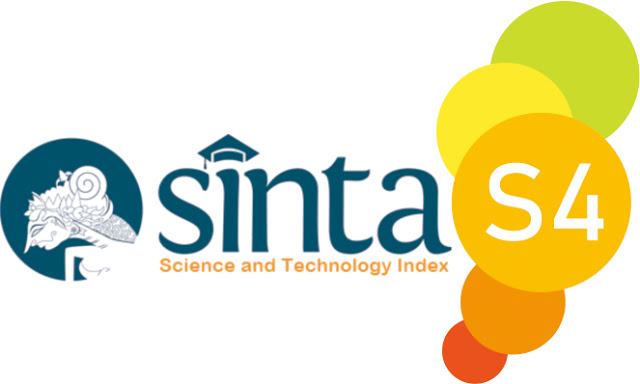Sentiment Analysis of Loudspeaker Regulations in Houses of Worship on Social Media Using Support Vector Machine Algorithm
Abstract
Social media is an online platform where users can share content or interact with each other through discussions and debates that involve sentiments, such as agreement or disagreement on various topics. User sentiments on social media can be utilized in multiple ways, such as to gauge public opinion regarding the issuance of Circular Letter Number SE 05 of 2022 by the Ministry of Religious Affairs, which provides guidelines for the use of loudspeakers in mosques and prayer rooms. Due to the high volume of comments on social media regarding this circular, a sentiment analysis system is necessary. The sentiment analysis system in this research employs the Support Vector Machine (SVM) algorithm to classify comments as positive or negative. A total of 350 comments were collected from each social media platform—Facebook, Twitter, YouTube, and Instagram—about the issuance of the circular. These comments were divided into 250 for training data and 100 for testing data on each platform. The training data from all platforms were combined, resulting in a total of 1000 training data. Based on system testing using the Support Vector Machine algorithm, the accuracy achieved was 72%. This result reflects the system's capability to analyze sentiments related to the guidelines for using loudspeakers in mosques and prayer rooms as stated in the circular
Downloads
References
N. R. Syamsiyah and A. Muslim, “Kajian Perbandingan Gaya Arsitektur dan Pola Ruang Masjid Agung Surakarta dan Masjid Gedhe Kauman Yogyakarta,” Sinektika: Jurnal Arsitektur, vol. 15, no. 1, pp. 1–6, 2019, doi: 10.23917/sinektika.v15i1.8989.
D. Riyanto and M. Munaji, “IbM PENGERAS SUARA MASJID DARUSALAM JANTI SLAHUNG,” Jurnal Dedikasi Masyarakat, vol. 2, no. 1, pp. 30–36, 2018, doi: 10.31850/jdm.v2i1.352.
N. Herlinawati, Y. Yuliani, S. Faizah, W. Gata, and S. Samudi, “Analisis Sentimen Zoom Cloud Meetings di Play Store Menggunakan Naïve Bayes dan Support Vector Machine,” CESS (Journal of Computer Engineering, System and Science), vol. 5, no. 2, pp. 293–298, 2020, doi: 10.24114/cess.v5i2.18186.
R. I. P. Ganggi, “Materi Pokok dalam Literasi Media Sosial sebagai salah Satu Upaya Mewujudkan Masyarakat yang Kritis dalam Bermedia Sosial,” Anuva, vol. 2, no. 4, pp. 337–345, 2018, doi: 10.14710/anuva.2.4.337-345.
H. Malini, Corporate Sustainability Management (Studi Kasus Perusahaan yang Ada di Indonesia). Solok: Insan Cendekia Mandiri, 2021.
F. A. Nugraha, N. H. Harani, and R. Habibi, Analisis Sentimen Terhadap Pembatasan Sosial Menggunakan Deep Learning. Bandung: Kreatif Industri Nusantara, 2020.
M. Furqan and A. F. A. Nasir, “Big Data Approach To Sentiment Analysis in Machine Learning-Based Microblogs: Perspectives of Religious Moderation Public Policy in Indonesia,” Journal of Applied Engineering and Technological Science, vol. 5, no. 2, pp. 955–965, 2024, doi: 10.37385/jaets.v5i2.4498.
M. Furqan, S. Sriani, and S. M. Sari, “Analisis Sentimen Menggunakan K-Nearest Neighbor Terhadap New Normal Masa Covid-19 Di Indonesia,” Techno.Com, vol. 21, no. 1, pp. 51–60, 2022, doi: 10.33633/tc.v21i1.5446.
S. W. Kim and J. M. Gil, “Research paper classification systems based on TF-IDF and LDA schemes,” Human-centric Computing and Information Sciences, vol. 9, no. 1, pp. 1–21, 2019, doi: 10.1186/s13673-019-0192-7.
I. Tahyudin, Pengenalan Machine Learning Menggunakan Jupyter Notebook. Purwokerto: Zahira Media Publisher, 2020.
F. A. Sianturi, P. M. Hasugian, A. Simangunsong, and B. Nadeak, DATA MINING: Teori dan Aplikasi Weka. Medan: IOCS Publisher.
L. Muflikhah, Widodo, W. F. Mahmudy, and Solimun, Machine Learning dalam Bioinformatika. Malang: Universitas Brawijaya Press, 2021.
N. A. Batubara and R. M. Awangga, Tutorial Object Detection Plate Number with Convolution Neural Network (CNN). Bandung: Kreatif Industri Nusantara, 2020.
Nofri Wandi Al-Hafiz, Helpi Nopriandi, and Harianja, “Design of Rainfall Intensity Measuring Instrument Using IoT-Based Microcontroller”, JTOS, vol. 7, no. 2, pp. 202 - 211, Dec. 2024.
N. W. Al-Hafiz and H. Harianja, “Design of an Internet of Things-Based automatic cat feeding control device (IoT)”, Mandiri, vol. 13, no. 1, pp. 161–169, Jul. 2024.
PutriD. and Al-HafizN., “SISTEM INFORMASI SURAT KETERANGAN GANTI RUGI TANAH PADA KECAMATAN KUANTAN TENGAH MENGGUNAKAN WEBGIS”, Biner : Jurnal Ilmiah Informatika dan Komputer, vol. 2, no. 2, pp. 112-121, Jul. 2023.
H. Harianja, N. W. Al-Hafiz, and J. Jasri, “Data Analysis of Informatics Engineering Students of Islamic University of Kuantan Singingi”, JTOS, vol. 6, no. 1, pp. 23 - 30, Jan. 2023.
Siregar, M., and N. Al-Hafiz. "Design of Cloud Computer to Support Independent Information System Servers Universitas Islam Kuantan Singingi." Journal of Information System Research (JOSH) 3.2 (2022)
Copyright (c) 2025 Selly Novia Manihuruk , Mhd. Furqan, Aidil Halim Lubis

This work is licensed under a Creative Commons Attribution-ShareAlike 4.0 International License.
This is an open-access article distributed under the terms of the Creative Commons Attribution-ShareAlike 4.0 International License which permits unrestricted use, distribution, and reproduction in any medium. Users are allowed to read, download, copy, distribute, search, or link to full-text articles in this journal without asking by giving appropriate credit, provide a link to the license, and indicate if changes were made. All of the remix, transform, or build upon the material must distribute the contributions under the same license as the original.















